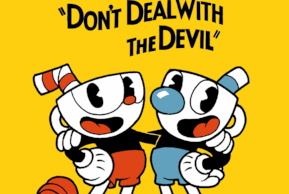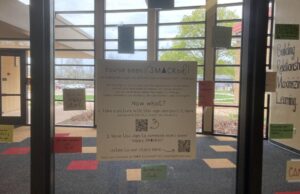The Write Path: Part One—How To Turn An Idea Into A Story
By Brandt Baron on February 16, 2022
I’ve been making stories since I could write, and before that I just came up with storylines in my head. I vividly remember acting out my own stories in the back of my living room when I was five. I remember the stories I came up with in detail, and some of them I have continued working on over the years.
During that time, I have learned so much about constructing a storyline, character development, plot twists, conflict, etc., etc., etc. The list goes on and on; it’s insane how much goes into creating an immersive story.
Originally this was just going to be 1 story and that would be it, but the longer I thought about it, the more I realized that I could just write a series on this. I mean, if I crammed all of this information into one story, it would either be way too long or so brief that none of the information would actually be understood by anybody who reads this, so without further ado, here is the first edition of my story writing guide: How To Turn An Idea Into A Story.
A fully fleshed out storyline will most often start as a single idea. The speed at which the single idea turns into a full story varies greatly between writers. That being said, some people reach what is most commonly called “writer’s block.” I must admit that I don’t typically get writer’s block when it comes to coming up with stories; I get writer’s block when I try to flesh out the story in great detail, but this too varies greatly between writers.
So how do you come up with an idea? How do you become inspired? Where do you look, and how do you know if it’s worth pursuing as a story?
Coming up with an idea can be hard at times, especially if you are intentionally trying to. I think most writers are unintentionally inspired, but it’s not always that easy. I typically look at my life or a friend’s life and pick things out that I think I would enjoy writing about. The reason I look at real people’s lives is because one of my biggest goals in story writing is to create a world with characters that my audience can relate to.
Even in stories like “Harry Potter,” as fictional as it is, part of the reason for its success is because so many people can relate to the characters in the story. They can relate to Harry, Ron and Hermione because they’re depicted as outcasts and many kids and teenagers can relate to that feeling of being an outcast, but the characters rise above that and overcome their fears and embarrassment to do what’s right.
Even in the midst of a fictional world, you can have characters that feel very real and relatable. I personally think that you should also aim to create relatable characters because that will grip people and immerse them. They’ll learn to love the world you’ve created even more.
I can’t stress enough the importance of the last two paragraphs. Relatable characters immerse readers. You’re probably wondering how that helps you in your quest to form a story idea. Well, it can help you know what to look for.
What’s something a lot of people can relate to? Embarrassment, self-doubt and fear. There are more, but assuming it’s mostly teenagers who are reading this, those seem to be the most relevant. You can create characters from those few things. It doesn’t have to be just a realistic story about a kid going through school or an adult trying to figure out adulthood.
If you don’t understand what I’m saying, let me give an example. “Peter Pan” is a wildly popular story created by James Mathew Barrie and made popular by Disney’s adaptation of it in 1953. The underlying story of “Peter Pan” is about a boy who doesn’t want to grow up. He wants to stay young forever. He sees people like Captain Hook who have grown old, and time (meaning the crocodile who ate the clock) took a piece of Captain Hook (the crocodile that represents time ate Captain Hook’s hand). Even though the boy is trying to stay young forever, he’s faced with the choice to get married (to Wendy) and start a life together, as an adult, or stay in Neverland where he doesn’t have to worry about growing old, but that’s not the plotline that most people think of when they hear “Peter Pan.” (Jordan Peterson has a phenomenal video on this, where he talks about “Peter Pan” and why it’s so popular. He also goes in depth about other classic films such as “Beauty and the Beast”.)
That’s what I mean when I say your relatable storyline doesn’t have to be totally realistic. It can be fictional, but relatable characters and plots are important. Picking out feelings, events, etc. from people’s lives that are extremely common to most people is important even if it’s masked by a fictional character(s).
Another thing to consider looking at for story ideas are dreams you have. One of my stories that I am most proud of came from a dream I had a few years ago. The dream was just a single moment, but that single moment inspired a long, rich storyline filled with deep characters. Taking into consideration just a single moment that is interesting to you can turn into a full story.
Once you are inspired, you can turn it into something way bigger than just an idea. I can’t come up with an idea for you, nor can I teach you how to be inspired. These are just things that have worked for me even if they seem a bit crazy to you. If this paper seemed all over the place, that’s OK. Coming up with ideas is complicated, and I had to try to fit my methods of doing so into one column. Seeing as this column is already a part of a series, it would be a bit much to turn “Forming An Idea” into a series of its own.
Next week I will be talking about taking your idea and turning it into a general plotline with progression and conflict where I will go over how to make a plot interesting and get your audience invested. Keep in mind that this series is not just for writing a book. These tips apply to script writing and screenplays, etc.
Search
News

Peet Good Vibes enrichment expanding impact
Lana Greenleaf | April 23, 2024In February, a new enrichment started at Peet. The Good Vibes enrichment is a space during Tiger Time on Fridays where students make positive and inspirational quotes to tape...
-
 Lana Greenleaf | April 22, 2024
Lana Greenleaf | April 22, 2024
-
 Annie Seery | April 17, 2024
Annie Seery | April 17, 2024
Colleges returning to using standardized testing for admissions
-
 Hanna Lane | April 17, 2024
Hanna Lane | April 17, 2024
-
 Hanna Lane | April 9, 2024
Hanna Lane | April 9, 2024
-
About
The Tiger Hi-Line Online is an award-winning creation produced by the journalism students at Cedar Falls High School. We produce written, photographic and video stories of the latest news around campus as well as teen-centered topics from around the world. The content is created entirely by students, primarily from the newspaper, broadcast and yearbook courses at Cedar Falls High School. Please email any story ideas to hilinestaff@gmail.com.Tags
2018-2019 2019-2020 alayna yates AOTW art artist of the week athlete of the week basketball books Cedar Falls High School CFHS choir Christmas college COVID donald trump Eden Davis entertainment Erin McRae feature Football games halloween home homecoming Iowa Jaden Merrick jared hylton movies music news opinion our view politics prom robotics Sabine Martin Sal Engle Skylar Promer Sophia Schillinger sports state Swimming video games volleyball




You must be logged in to post a comment Login